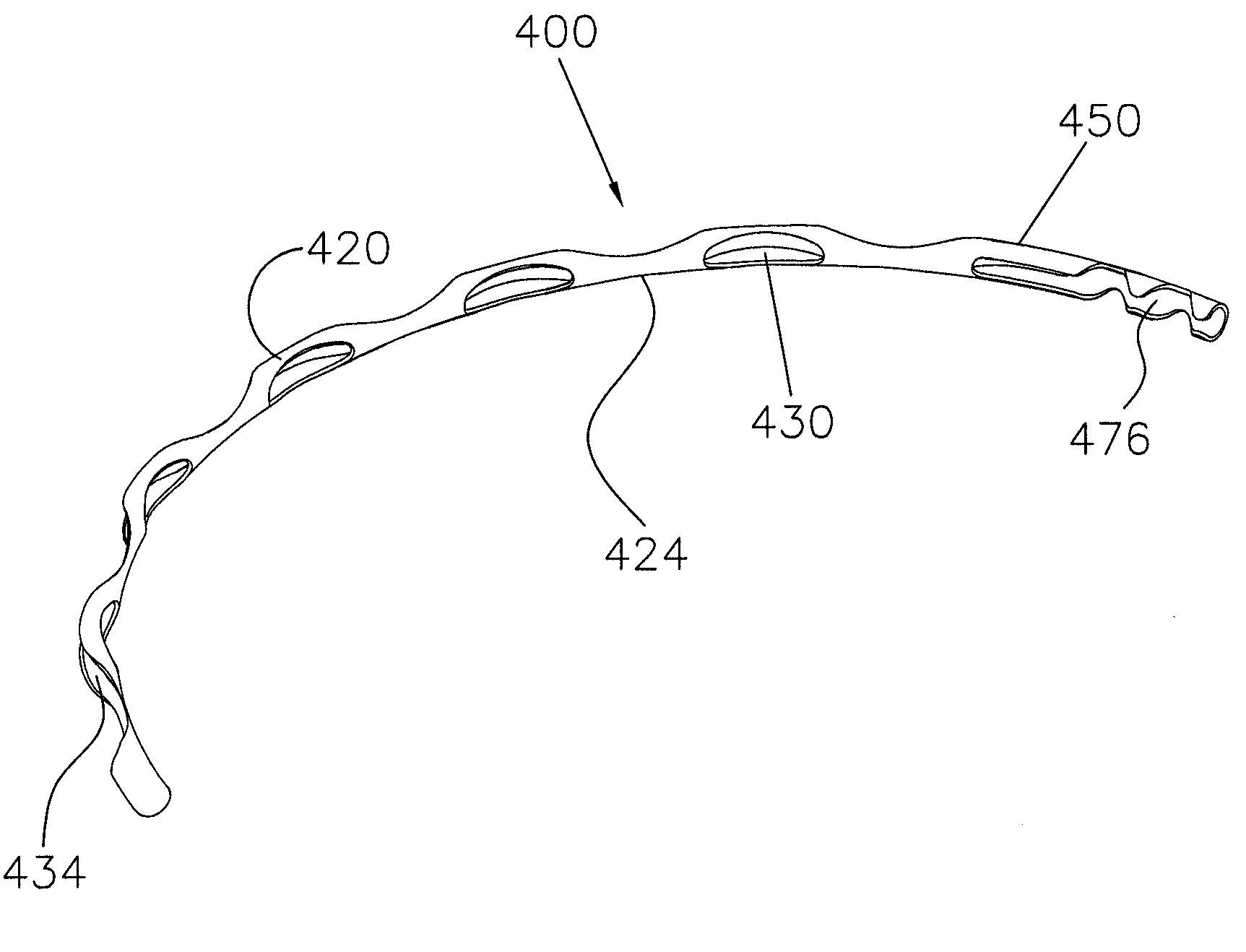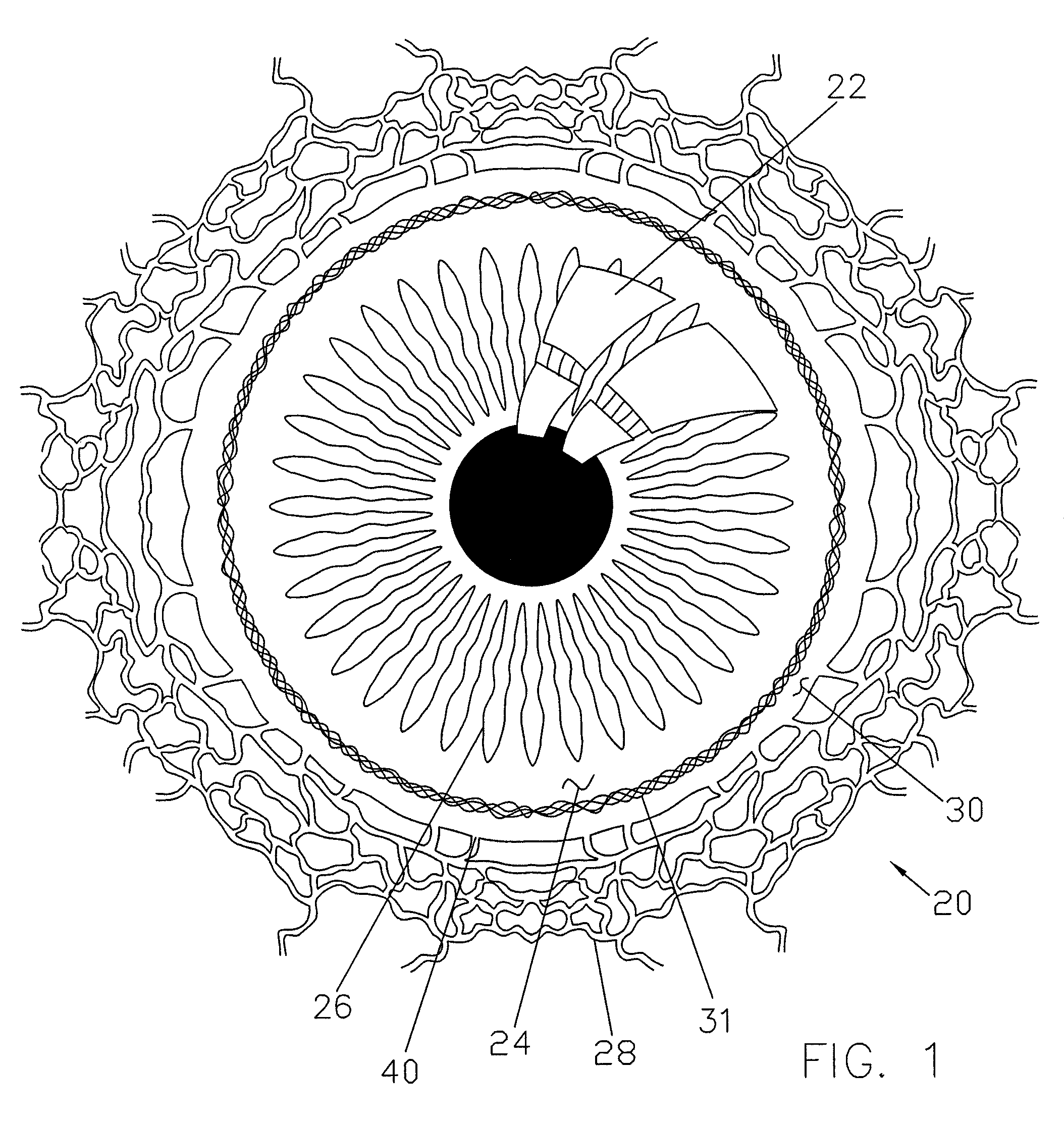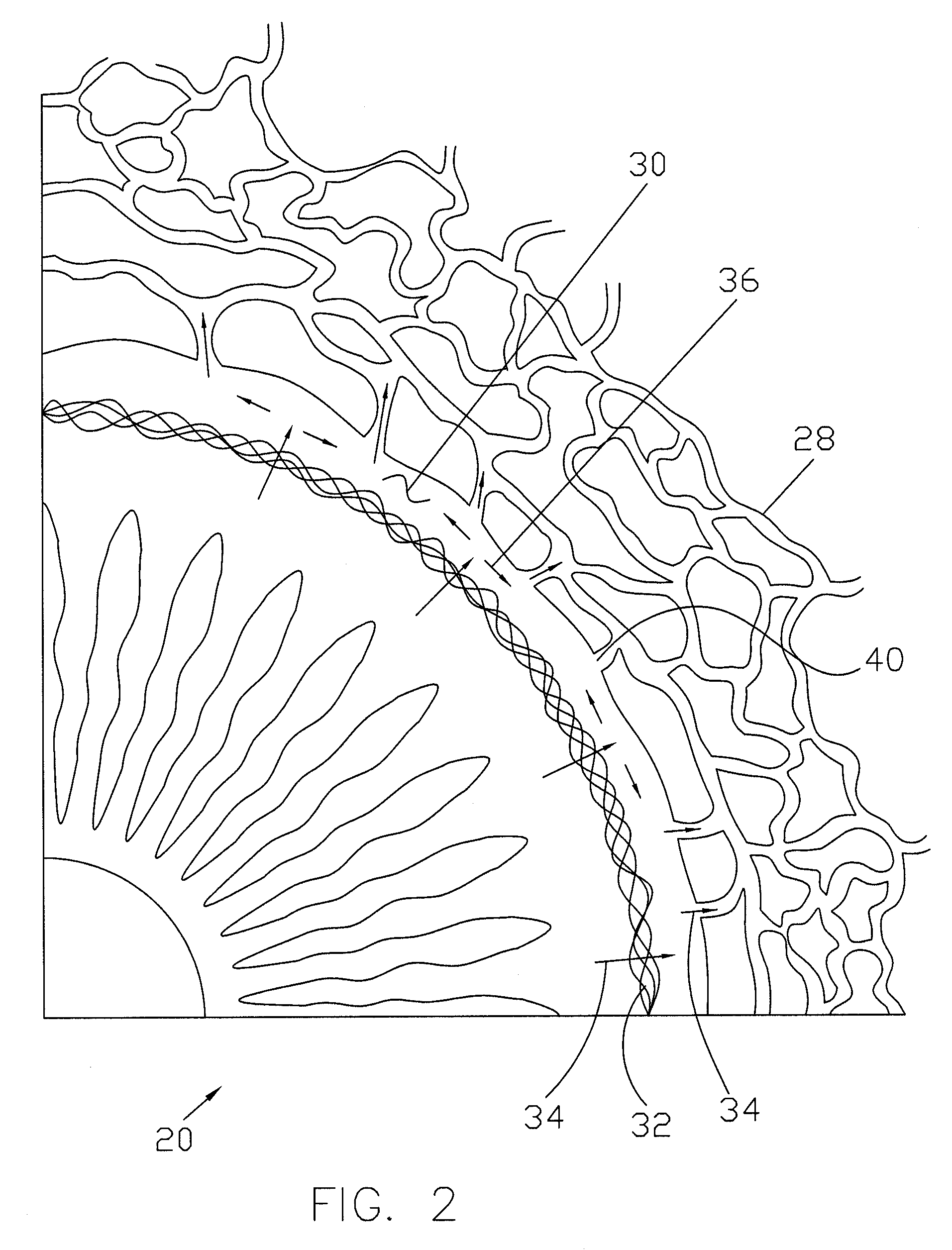Ocular implants for placement in schlemm's canal
a technology of ocular implants and schlemm's canal, which is applied in the field of ocular implants, can solve the problems of affecting the function of the ocular implant, the damage to adjacent tissue, and the relative high fluid flow rate of the device at or around the device, so as to facilitate the flow of aqueous humor and facilitate the flow
- Summary
- Abstract
- Description
- Claims
- Application Information
AI Technical Summary
Benefits of technology
Problems solved by technology
Method used
Image
Examples
Embodiment Construction
[0046]The following detailed description should be read with reference to the drawings, in which like elements in different drawings are numbered identically. The drawings, which are not necessarily to scale, depict exemplary embodiments and are not intended to limit the scope of the invention. Examples of constructions, materials, dimensions, and manufacturing processes are provided for selected elements. All other elements employ that which is known to those of skill in the field of the invention. Those skilled in the art will recognize that many of the examples provided have suitable alternatives that can be utilized.
[0047]FIG. 1 is a plan view showing a portion of an eye 20. A reflection on the outer surface of the cornea 22 of eye 20 is visible in FIG. 1. Cornea 22 encloses an anterior chamber 24 of eye 20. The iris 26 of eye 20 is visible through cornea 22 and anterior chamber 24. Anterior chamber 24 is filled with aqueous humor which helps maintain the generally hemispherical...
PUM
 Login to View More
Login to View More Abstract
Description
Claims
Application Information
 Login to View More
Login to View More - R&D
- Intellectual Property
- Life Sciences
- Materials
- Tech Scout
- Unparalleled Data Quality
- Higher Quality Content
- 60% Fewer Hallucinations
Browse by: Latest US Patents, China's latest patents, Technical Efficacy Thesaurus, Application Domain, Technology Topic, Popular Technical Reports.
© 2025 PatSnap. All rights reserved.Legal|Privacy policy|Modern Slavery Act Transparency Statement|Sitemap|About US| Contact US: help@patsnap.com



